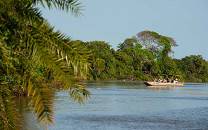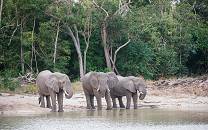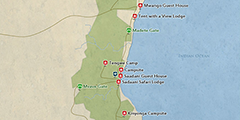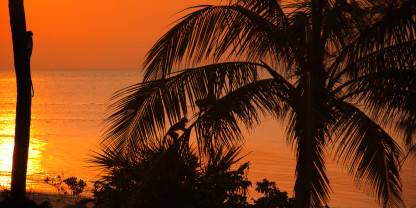The bush meets the beach in Saadani National Park. Thanks to its long Indian Ocean beachfront, this is the one place in East Africa where those idle hours of sunbathing might be interrupted by an elephant strolling past, or animals coming to drink at a nearby . And if you go for an early morning stroll on the beach you might see the Swahili fishers casting their nets at sunrise.

-
Best Time To Go
- January and February and June to August
-
High Season
- June to October (It rarely gets crowded)
-
Size
- 1,100km² / 425mi²
-
Altitude
-
0-346m /0-1,135ft
 View Photos
View Photos
 View Photos
+24
Photos
View Photos
+24
Photos
 Open Map
Open Map
Pros & Cons
- Combination of beach and bush
- Perfect beach destination for people who prefer a bush environment to a typical holiday resort
- Closest wildlife-viewing destination to Zanzibar, connected by daily flights
- and boat trips available
- Most of the major safari animals aren't present or easily seen
- The wildlife-viewing circuit is small
- Lack of wilderness appeal with human settlements all around
Wildlife
Saadani isn’t a prime safari destination, but there is always some wildlife around. Commonly seen on drives are elephant, giraffe, buffalo, common waterbuck, Lichtenstein's hartebeest, wildebeest, yellow baboon and vervet monkey. Hippos, crocodiles and a selection of waterbirds can be seen on boat trips. Saadani's wildlife specials are the shy red duiker, the endangered Roosevelt's sable and green turtles, for which the park is a breeding site.
More about Saadani’s wildlifeScenery
Mangroves separate the idyllic palm-lined beaches, and the watercourses are fringed by woodland. The habitat inside the park is mostly grassland interspersed with acacia thickets. Part of the extensive Zaraninge coastal forest, a biodiversity hot spot in Tanzania, is also located within the park boundaries.
Activities
Morning and afternoon are best to see a variety of wildlife, but there is no better way to connect with nature than on a . Bird-lovers should not miss out on a river safari. A boat cruise on the Wami River is a highlight of any stay. Snorkeling trips and village tours are also available.
Weather & Climate
Saadani’s tropical climate is governed by a warm Dry season (June to September) and a hot, sticky Wet season (October to May). Rain shouldn’t really interfere with your safari, except in April and May, when the rainfall peaks.
More about the weather and climateBest Time To Visit
The best time to visit Saadani is after the rains, in January and February (in the dry spell between the short and long rains) and from June to August (the opening months of the Dry season). This is when animals use the water pooled on the plains to hydrate. The birdlife is most spectacular in the Wet season.
More about the best time to visit



